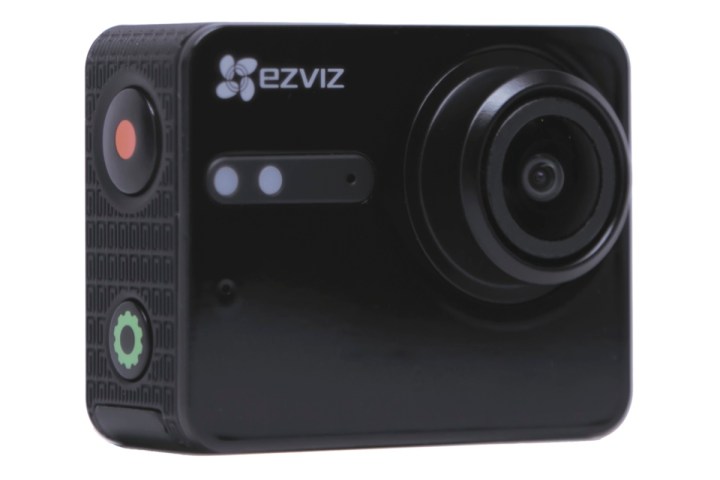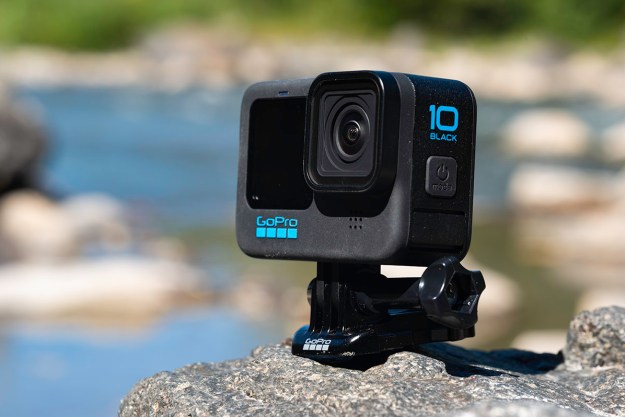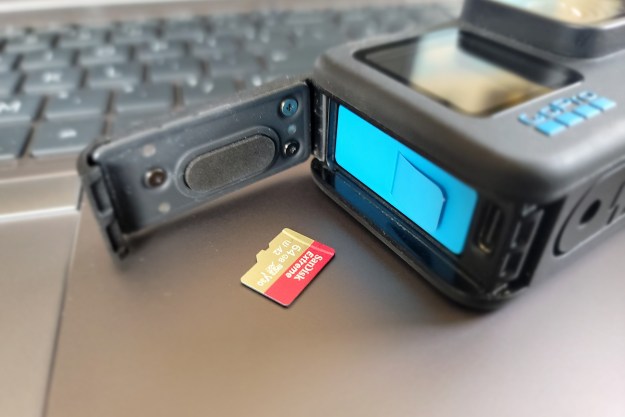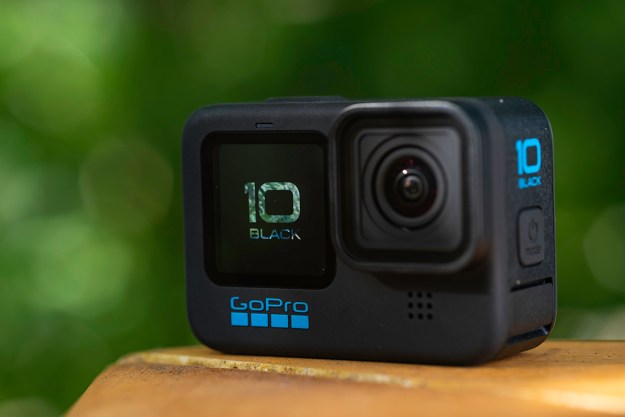
The Ezviz Five+ and Ezviz Five share a similar body that weighs 2.5 ounces and measures 1.8 x 2.3 x 0.9 inches – slightly smaller and lighter than a GoPro Hero4 Black or Silver. Both share a 1/2.33-inch Progressive Scan CMOS sensor from Sony and a 3mm f/2.8 lens with a 158-degree field of view; Wi-Fi and Bluetooth (802.11b/g/n/ac and Bluetooth 4.1 in the Five+, and 802.11b/g/n and Bluetooth 4.0 in the Five); 2-inch IPS touchscreen (480 x 320 in the Five+, and 320 x 240 in the Five); Micro USB 3.0 and Micro HDMI ports; mobile app for editing and sharing; and underwater depth of 131 feet when used with a housing. The camera also support Micro SD cards of up to 128GB versus 64GB in the Hero4 Black and Silver.
The Five+ ($400), on paper, is comparable to the Hero4 Black. It uses the Ambarella A9 chipset and processor, which is reportedly used in the Hero4 Black (GoPro does use chipsets supplied by Ambarella). This particular chipset is capable of 4K video capture at 30 frames per second (fps), which the Hero4 Black touts. Ezviz claims the Five+ battery (replaceable and rechargeable) can last 90 minutes while recording 4K/30 fps continuously, and it has electronic image stabilization and dual mics for noise cancellation (which the Hero4 lacks). The internal gyro that handles stabilization also provides image auto-flipping.
Like the Hero4 Black, besides 4K the Five+ can shoot at 2.7K, 1440p, 1080p, and 720p. But the Hero4 Black trumps the Five+, as it supports more resolutions and frame rates than the Five+, including 2.7K at 60 fps and 1080p at 120 fps, not to mention its SuperView mode. Photo capture is the same at up to 12 megapixels, and the Five+ has similar burst and time-lapse modes, including a night time-lapse mode. The Hero4 Black (and Silver), however, has a 170-degree ultra-wide-angle lens that’s adjustable down to 127 or 90 degrees, and a front-panel for navigating through settings, but it lacks a handy built-in color touchscreen for framing.
The Five ($300) is similar to the Hero4 Silver. Both can shoot 4K at 15 fps (the Five uses an Ambarella A12 chipset, possibly also in the Silver), although GoPro doesn’t promote the Silver’s

The Five+ will be available in black and amber gold colors, while the Five will come in gunmetal grey, red, blue, and pale gold (availability date to be determined). Ezviz will offer optional mounts and accessories, including a waterproof Bluetooth remote that’s wearable, but it looks like the cameras can utilize the many GoPro accessories already on sale.
Respectively, the cameras are $100 off their GoPro counterparts. They share many similarities, and have their pros and cons. However, the Hero4 models offer a bit more shooting modes and adjustable settings (ProTunes), among other features. GoPro’s processing software is also uniquely theirs, so even though the Five+ and Five may use the same parts, image quality could still vary. If you want greater control, the Hero4 are better (both the Black and Silver are our Editors’ Choice cameras), but if you want a GoPro-like camera and some savings, these Ezviz models could be considered. However, we haven’t seen any actual footage from the cameras (during CES 2016, Ezviz had some non-working samples) and Ezviz isn’t exactly a household name, so it’s far too early to for any real-use opinions.
Editors' Recommendations
- The 15 best GoPro accessories in 2024
- Why I fell in love with action cameras in 2022, and what I think comes next
- GoPro Hero 10 Black vs DJI Action 2 vs. Insta360 One RS: Clash of the action cameras
- ReelSteady makes GoPro Player ‘reel’ useful for filmmakers
- GoPro keeps recording as parrot steals it from tourists and flies off


